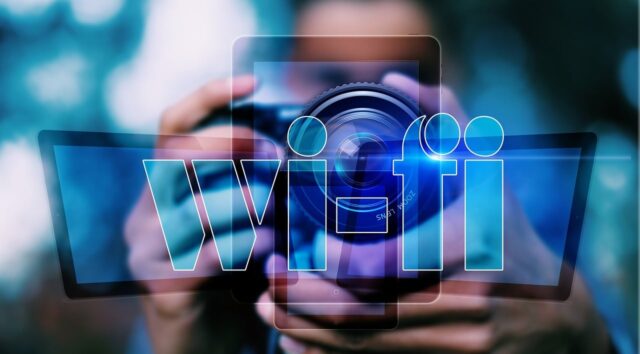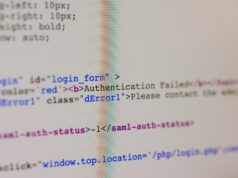In a world where connection is as vital as the air we breathe, the allure of free Wi-Fi beckons like a siren’s call, drawing us into its embrace with promises of convenience and accessibility. Yet, lurking beneath this seemingly benign surface are the threats that threaten our very sense of security. The open connections that populate cafes, airports, and bustling city squares may feel like a gateway to productivity, but they also conceal the potential for peril. It is essential to understand the dangers of public Wi-Fi and how to protect oneself from the hazards that accompany such freedom.
As we navigate through these digital landscapes, it becomes paramount to recognize the risks that accompany these open networks. The ease with which one can connect often overshadows the need for vigilance. Cybercriminals lie in wait, poised to exploit any lapse in our defenses. The strategies for securing oneself against these threats demand our attention and action; complacency can be our undoing in an age where information flows freely yet remains vulnerable.
Moreover, the beauty of technology is matched only by its complexity. As we enjoy the conveniences afforded by public Wi-Fi, we must also equip ourselves with knowledge–the protection strategies that empower us to traverse these networks without fear. From utilizing virtual private networks to understanding the significance of encryption, knowing how to stay safe while connecting can transform our experience from one of trepidation to one of confidence.
In this exploration of public Wi-Fi and its inherent dangers, we will delve deeper into the risks involved, illuminate the various threats that exist within these open connections, and provide practical tips for safeguarding your digital life. In doing so, we hope to foster a culture of awareness and preparedness, reminding ourselves that in every free network lies both opportunity and vulnerability–a delicate balance we must learn to navigate with care.
The Dangers of Public Wi-Fi and How to Stay Safe
In the bustling heart of modern life, public Wi-Fi networks beckon like shimmering oases in a digital desert, promising connection and ease. Yet, beneath that inviting surface lies a web of risks that can ensnare the unsuspecting traveler or the busy professional. These open connections, while convenient, harbor dangers that can compromise not only personal data but also financial security and privacy. As we navigate this landscape of convenience, it becomes essential to understand the threats that lurk behind the allure of free Wi-Fi.
The hazards associated with public Wi-Fi are far-reaching. Hackers often exploit these open networks to intercept sensitive information transmitted by unsuspecting users. It is alarming how easily one might fall prey to such tactics–connecting to a network that seems benign could lead to unauthorized access to your emails, social media accounts, or even banking details. This vulnerability is exacerbated in crowded cafes or airports, where the sheer volume of connections creates an ideal environment for malicious actors to thrive.
To safeguard oneself from these lurking dangers, adopting effective strategies becomes imperative. One of the simplest yet most crucial tips is to avoid accessing sensitive accounts while connected to public Wi-Fi. Instead, use a virtual private network (VPN), which encrypts your connection and shields your data from prying eyes. This layer of security acts as a barrier against potential threats, ensuring that your online activities remain private and secure even in the most open environments.
Moreover, it is wise to scrutinize the legitimacy of any free Wi-Fi network before connecting. Often, hackers create deceptive hotspots with names similar to legitimate networks, luring users into their traps. A discerning eye can help you identify these impostors–always confirm with staff or trusted sources before connecting. Additionally, turning off file sharing settings on your device can further reduce risks, limiting the chances of unauthorized access to your files while navigating through these open networks.
As we traverse this interconnected world, remaining aware of the inherent dangers associated with public Wi-Fi is crucial. By implementing robust protection strategies and exercising caution in our online habits, we can enjoy the conveniences offered by free networks without falling victim to their perils. In this dance between connectivity and vulnerability, knowledge serves as our greatest ally–an enduring shield against the unseen threats that linger in the shadows of our digital lives.
The Dangers of Public Wi-Fi and How to Stay Safe
In the bustling streets where people congregate, the allure of free Wi-Fi networks beckons like a siren’s song. Yet, beneath this seemingly innocent invitation lies a treacherous landscape of risks that can ensnare the unsuspecting. Public Wi-Fi, so readily available in cafes and airports, offers convenience but also exposes users to a myriad of hazards. The very nature of these open connections allows malicious actors to lurk in the shadows, waiting for an opportunity to exploit vulnerabilities and breach personal data, leaving individuals vulnerable to identity theft and financial loss.
The dangers of free Wi-Fi networks are numerous and often underestimated. With each connection, users unwittingly place their trust in an invisible web that lacks adequate security measures. Information can be intercepted through techniques such as “man-in-the-middle” attacks, where a hacker positions themselves between the user and the network, capturing sensitive information like passwords and credit card numbers. Such threats highlight the importance of understanding how these networks operate and the potential consequences of careless usage. It is imperative to recognize that while the price may be right, the cost of neglecting safety can be profoundly high.
To protect oneself in this digital wilderness, employing thoughtful strategies becomes essential. One must consider using a virtual private network (VPN) which encrypts data, creating a secure tunnel through which information travels, thereby shielding it from prying eyes. Additionally, connecting only to those networks that require passwords can significantly reduce exposure to threats. Educating oneself about the signs of secure connections–marked by ‘https’ in web addresses–can serve as an important tip in navigating through the perils of public Wi-Fi.
Ultimately, ensuring safety while utilizing open Wi-Fi connections requires vigilance and proactive measures. As we traverse these modern landscapes filled with both opportunity and risk, it is our responsibility to secure ourselves against potential dangers. By remaining aware of the prevalent threats and adopting effective protection strategies, one can enjoy the benefits of connectivity without succumbing to the lurking perils that shadow our digital lives. In this ever-evolving world, knowledge remains our greatest ally; let us wield it wisely as we navigate through the complexities of public networks.
The Dangers of Public Wi-Fi and How to Stay Safe
In a world increasingly intertwined with technology, the allure of free Wi-Fi networks beckons like a siren’s call, promising connectivity without the burden of expense. Yet beneath this veneer of convenience lie the lurking shadows of risks and hazards that can compromise one’s personal data. The open connections found in cafés, airports, and public libraries may offer the warmth of accessibility, but they also harbor dangers that can ensnare the unwary. Understanding these threats is the first step towards securing oneself in a digital landscape fraught with potential pitfalls.
As you traverse through these public spaces, it becomes imperative to recognize how easily information can be intercepted on open Wi-Fi connections. Cybercriminals often lie in wait, exploiting the lack of encryption that typifies many free networks. The reality is stark: each time you connect to such a network, your personal data may float unguarded in the ether, vulnerable to prying eyes. It is within this fragile framework that we must forge strategies for protection–a necessary dance between caution and convenience.
To safeguard your information while navigating these treacherous waters, consider taking certain proactive steps. Employing a Virtual Private Network (VPN) can serve as a shield, encrypting your data and creating a secure tunnel through which your online activities may flow unhindered. This simple yet effective tool not only offers safety but also grants peace of mind, allowing you to transact or communicate without constant fear of exposure. Moreover, keeping your device’s software updated ensures that any vulnerabilities are promptly addressed, fortifying your defenses against potential intrusions.
One must also remain vigilant about the types of connections being made. Avoid accessing sensitive accounts or entering personal information over public Wi-Fi–this includes banking details or email passwords. The act of logging into such profiles on an unsecured network is akin to leaving your front door wide open; the risks are undeniably significant. In this regard, awareness becomes your greatest ally; recognize when it is prudent to forgo convenience for security’s sake.
Furthermore, consider disabling automatic connection features on your devices. Many smartphones and laptops have settings that allow them to connect to available networks without user intervention. This feature, although convenient, can lead one into precarious situations where malicious networks masquerade as legitimate access points. By taking control over which networks you join, you fortify your digital existence against unforeseen hazards that lurk in the guise of free connectivity.
In conclusion, as we navigate this digital frontier, let us embrace the essence of safety with an informed heart and a watchful eye. The beauty of technology lies not only in its ability to connect us but also in our capacity to protect ourselves amidst its vast expanse. By understanding the dangers inherent in public Wi-Fi and implementing thoughtful strategies for protection, we can turn the tide against those who would exploit our vulnerabilities. In doing so, we reclaim our agency and ensure that our journeys through this interconnected world remain safe and secure.
The Dangers of Public Wi-Fi and How to Stay Safe
In the ever-evolving landscape of connectivity, where the allure of free Wi-Fi beckons like a siren’s call, one must tread carefully. The open networks that promise convenience often conceal lurking threats, waiting patiently to exploit the unsuspecting. It is a modern-day paradox: the more we connect, the more vulnerable we become. Yet, within this web of risks lies the potential for security through knowledge and preparation.
Understanding the hazards of public Wi-Fi is essential for anyone seeking to navigate this digital age safely. Each connection carries with it an array of potential dangers, from unauthorized access to sensitive information to the pervasive threat of malware. However, by implementing effective strategies and employing robust protection tools, one can significantly mitigate these risks and secure oneself against the myriad threats that lie in wait.
Securing Yourself in a Public Wi-Fi World
To safeguard your digital life while using public networks, consider the following tips:
- Use a VPN: A Virtual Private Network encrypts your internet traffic, making it difficult for attackers to intercept your data.
- Enable Two-Factor Authentication: This adds an extra layer of security by requiring not just a password but also a second form of identification.
- Avoid Sensitive Transactions: Refrain from accessing banking information or entering personal details on public networks.
- Turn Off Sharing: Disable file sharing and other sharing options in your device settings when connected to open Wi-Fi.
- Forget the Network: Once you’ve finished using a public network, ensure your device forgets it to prevent automatic reconnections.
As we navigate through the interconnected world, it is vital to remain vigilant against the inherent risks associated with free Wi-Fi networks. By understanding the threats and employing thoughtful protection strategies, you not only enhance your safety but also reclaim control over your digital interactions. Ultimately, securing yourself in this expansive realm of connections is not merely about avoiding danger; it is about fostering confidence in how you engage with technology, ensuring that each click and keystroke is both deliberate and safe.














